Let’s fix this…once and for all!
If you have ever had the frustrating experience of painstakingly selecting a beautifully curated collection of furniture for your clients, only to have them go rogue and purchase from the internet on their own, I know your pain. It’s a common complaint, really. Throughout the pandemic, homeowners got on a slippery slope with their online shopping and began picking out furniture without ‘kicking the tires’, rattling the drawers, or seat-testing the upholstered furniture.
If you want to put your reputation behind quality furniture for your clients such as sofas and sectionals, and stop clients from ‘shopping you’, you will find that success lies in a few key things.

Communication is important
Communication is key here. If you take the time to fully understand your clients values, and communicate yours as well, fully explaining why you uphold yours, there is tremendous opportunity to educate your clients and earn their trust. They don’t know, after all, what they don’t know. It is your job to advise them about the perils and pitfalls of buying furniture at the best of times, all-the-while walking that tightrope act of not scaring them off altogether. The message should be clear: there are pitfalls, don’t worry, I’ve got you!
There is always a place for budget-friendly furniture like a sofa or sectional, but you must be able to recognize the difference and determine what will work best for each client situation.
Helping your client understand the magic behind your method will do wonders. Most designers know how to walk the high-low line to create a beautiful result within the homeowners budget. Remind your clients all along why they hired you in the first place, to keep them on track.
Laws of attraction
While we are talking about communication, be clear about what your branding message is. Every time you share on any of your social media channels is your opportunity to educate your followers. If you post photos of inexpensive furniture and design tips for the frugal, guess what you will attract? No surprise here! It is difficult to attract homeowners who appreciate and value quality if you are posting for the DIY crowd. Keep your posts high-end, with professional photography and share only what you want to attract. Like attracts like!
An air-tight purchasing agreement
Having an air tight purchase agreement is imperative. Outline your role in detail for your clients, to communicate your value. Many designers specify a purchase minimum so homeowners understand from the outset that you are their retailer whom they can purchase quality furniture from. Many homeowners simply aren’t aware of this. Explain to them through your experiences and those of your peers why having an advocate like yourself inside the industry is their best advantage when things go wrong, which they will.
List all of the limitations your suppliers impose: timelines are not guaranteed, warrantees are provided by your suppliers and you cannot warrantee beyond the terms of your suppliers. Price increases are frequent and out of your control, delivery and installation fees are on top of product invoices and are billed separately…etc. etc. Whatever your terms are, list them all and walk through them with your clients. If you don’t have a good agreement, Claire Jefford includes purchasing terms in her contract bundle, and I highly recommend hers.
I am a firm believer that trust is earned by careful and thoughtful discussion. Avoiding the difficult conversations only delays the problems.

Consider a new business model
We feel this out at the very beginning to ask whether a homeowner wants to do their own shopping or wants us to provide the sourcing for their project. Then we can refer back to this initial conversation and remind them of their choice. It is a forked road and we either channel them into full service, or into a design plan. Having said that, some homeowners just like to be more involved. We love that!
Many designers are moving to a “design only” model. By providing the look and feel of a room and the space planning as well as picking out furniture pieces, you have already provided your client with a tremendous service. Consider ending it there. We provide Design Plans and tell our clients outright that they are welcome to look for a similar look and feel or wait for items to go on sale. But the clear caveat is that we cannot warrantee, or offer any confidence that they will be purchasing quality products nor that the result will be “magazine worthy”. But for some client, that is the ideal fit for what they want and need.
Manage their expectations
This should fall under “communication” but warrants a section for emphasis. The relationship between designer and client is one that needs managing and holding all the difficult conversations. Manage their expectations at each step to avoid problems before they start. That is the best time to let them know that you don’t need them to send suggestions. That only confuses the process. The time for that is the initial exploration phase where you get to know what they like and don’t like. Remind the homeowner that they hired you because they liked your work. For full-service clients, if they are constantly sending you suggestions for items, just reset the boundaries and remind them of why you work with your suppliers. Remind them of what they specifically said they liked about it, and then you are in a good place to let them know “you’ve got this”.
Product knowledge is key
Think for a minute how you would react if your financial advisor were to create fear and angst about investing in the stock market. You would stuff your savings inside the mattress like any rational person, wouldn’t you? Yet there is tremendous missed opportunity in the market by way of managed funds and blue-chip securities. With a trusted advisor, you put your funds in their hands and reap the benefits, trusting all-the-while that they would manage the risks with their inside knowledge.
So when it comes time to guide our clients, we need to do the same; educate them on the challenges of managing the orders and installations, and the tactics on the internet to sell them inferior furniture, all the while building their trust in you and your team. How do you do this? By arming yourself with education, experience, and expertise, you can be their trusted advisor. Much like your financial advisor, you are the key to product knowledge and the ins and outs of the industry. Arm yourself with knowledge about quality furniture, and the challenges of ordering online, and the disadvantages of overseas providers and they will be in your debt. The more you know, the better positioned you are to sell them on why they need to rely on you to have their best interests at heart.

Here’s what your clients need to know
Don’t be fooled by lower prices
Online pricing for furniture is deceptive – very deceptive. There are plenty of low to mid-priced sofas available but few of them worth the money. Why? They simply won’t hold up. There is a place for inexpensive furniture – it is great for staging a home where no-one will ever sit on a piece, for example, but a family room where all the action takes place is not it. You need a work-horse of a piece that will stand up to all the excitement!
Beauty is only skin deep
I have had too many homeowners hire me to help them find quality furniture after purchasing on the internet and being fooled by a “pretty picture”. You simply cannot assess quality from a photograph. If I showed you a picture of two similar sofas, most people, design pros included, would be hard-pressed to determine which one would last for 40 (or many more) years, and which would end up in landfill in a few short years. Its simply impossible to tell. If you are working with e-design clients, be sure and let them know that your mood-boards are for inspiration only unless you can stand behind the quality of the furniture.
Value Analysis/ Value Engineering isn’t just for cars
Grab a coffee (decaf just won’t do here) and bear with me while I delve into a bit of an explanation so you get the basics. VA/VE, or Value Analysis/Value Engineering is a term that doesn’t get mentioned often enough in the home furnishings market. To fully understand the practice of “Value Analysis and Value Engineering”, it is helpful to know where the term comes from, and why the practice was established. Va/Ve, or value engineering to be more brief, simply put, is the practice of tinkering with the ratio between function (or in the case of furniture, quality), and cost. Its origins go back to the time of the second world war and was used widely in the automotive industry when availability of parts became scarce, causing the need for products to be analysed for a solution to work around the shortage. First established by the General Electric Company, an item’s function was analysed to identify ways to reduce costs, improve the product – adding value (hence the term value engineering), or both.
What could all of this have to do with furniture, and buying a good sofa, you might ask? Well, plenty! The furniture industry has been under a lot of pressure to offer better pricing to stay competitive for the past thirty-five or so years since my grandfather’s firm closed its doors, and even long before then. Homeowners, with an appetite for better pricing have had a taste of internet purchasing with very mixed results and land-fill is filling up at an alarming rate with cast-off furniture that just didn’t stand up. A large percentage of the furniture sold in retail stores today is either mass-produced, made off-shore, or value-engineered and offered at much lower prices than those sold through higher-end retailers and designers. It has become increasingly difficult to sell quality furniture and brick and mortar retailers have had to but corners to meet their profit goals just to stay in business. With their shareholders to answer to, your interests are not theirs!
To go just a bit deeper and then we will come up for air, quite a few North American furniture manufacturers produce multiple levels or tiers of quality allowing for the big name stores to offer white label furniture under their brand that is not the same quality as a designer will provide. It has become common practice to cut back on materials and steps in the process to offer quality at various levels. The quality, doesn’t affect how pieces photograph for the internet, and for online catalogues, so the consumer is easily fooled. Unfortunately, this has become common practice.
That you will have their back!
So many times, and in so many ways, designers are asked to explain what value they bring to the table. Certainly, their inside knowledge of the construction process, ability to visualize and plan the outcome from the start are very important strengths but Do Not underestimate their purchasing knowledge. Designers attend trade events and tour manufacturing facilities to learn the behind-the-scenes steps to constructing quality furniture built-to-last. Their product knowledge is second to none, and can help you really understand what goes into the price that makes one sofa very different from another. They are educated about fabrics: fibres, filaments, dying process, weaves, treatments (and more); as well as furniture: construction processes, materials, options for customization and so much more. They can help you find the right piece that is ideal for your needs AND your lifestyle. Pets, children with sticky fingers, beer and red wine spills, high traffic areas, all go into their understanding of why a particular piece made by a specific manufacturer with the right fabric meets your needs like no-one else can!
But what goes unsaid, and gets called into question so much of the time, is that they really, really have your best interests at heart. I have attended many trade events where designers gather to learn about the best new practices and products so they can bring you exactly what you need.
Quality furniture IS still made, just like they used to!
Many great manufacturers are actively making quality furniture in the United States and in Canada, it’s just not sold through big box homewares stores. It can be purchased through designers and trade professionals. This was the tradition in my grandfather day when his furniture was sold “to the trade” and is still the best way to ensure product knowledge is imparted through industry professionals.

Want to know more?
There is so much product knowledge to be acquired! If you are new to the industry or want to arm yourself with a deeper understanding of sofas and upholstered furniture, I go into everything you need to know about sofas/sectionals, and upholstered goods all wrapped up in one online course.
I tell you everything you need to know and a few things we think you ought to know (but don’t know to ask about). This is for you whether you are a designer, a decorator, or a homeowner looking to buy a piece of furniture and aren’t sure what to ask about. Our cheat sheets, guides and checklists will have you well-armed. The best part? This self-guided program is available to you online to absorb on your own time, at your own pace. Need to review a section? No problem, just go back right to where you left off. You don’t need to show up at a certain time for a class that is only offered when you can’t make it, and you have access to the notes to refer to over and over again. Trust me, you can’t take it in all at once!
I will never forget the day my grandfather took me by the hand on a day when I was visiting the factory and showed me the insides of a sofa. Somehow that lesson stuck with me and made a big impression. I must have been only eight or ten years old, but I was enthralled! In this course, I’ve done a deep dive into lessons learned from my family heritage in the furniture industry and years in the design industry and am sharing all the lessons you really need to make better upholstery purchases.
Whether you are a homeowner looking to buy a sofa/sectional, or you are a designer frustrated by clients “shopping you”, this will arm you with what you need to add: product knowledge – the key to knowing how to sell or how to “Buy a Better Sofa”!









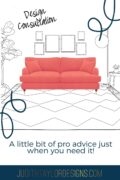
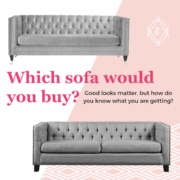
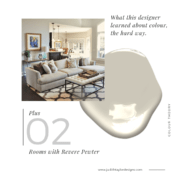
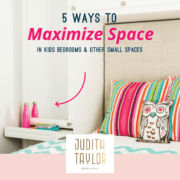


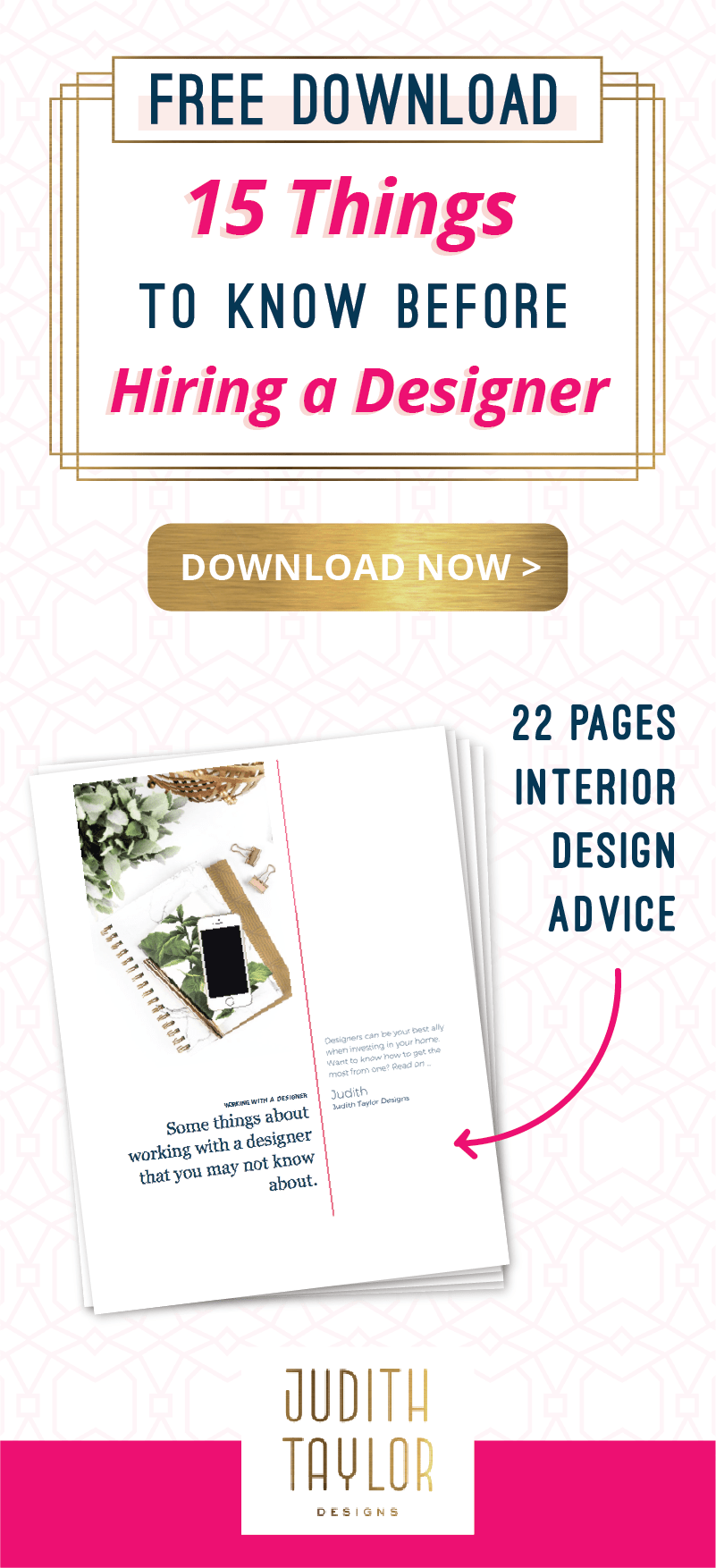
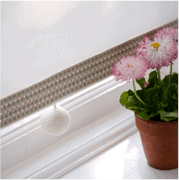


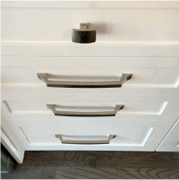
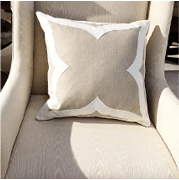

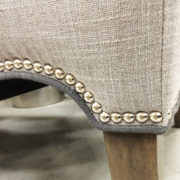
Hi Judith – Great information here – understanding what goes into making quality furniture and educating others is such a big part of our jobs.
Excellent post, Judith! Most consumers don’t realize how much of they see is engineered to meet a lower price point, and this is such important information to impart! Educating clients is a critical job of the designer so that they can make informed decisions and get exactly what is best suited to the situation!
Exactly! It is so frustrating to see uninformed homeowners buying furniture off the internet trusting that they are getting good value. They are not!
It certainly is, and they don’t teach a lot about furniture construction at most of the design schools.